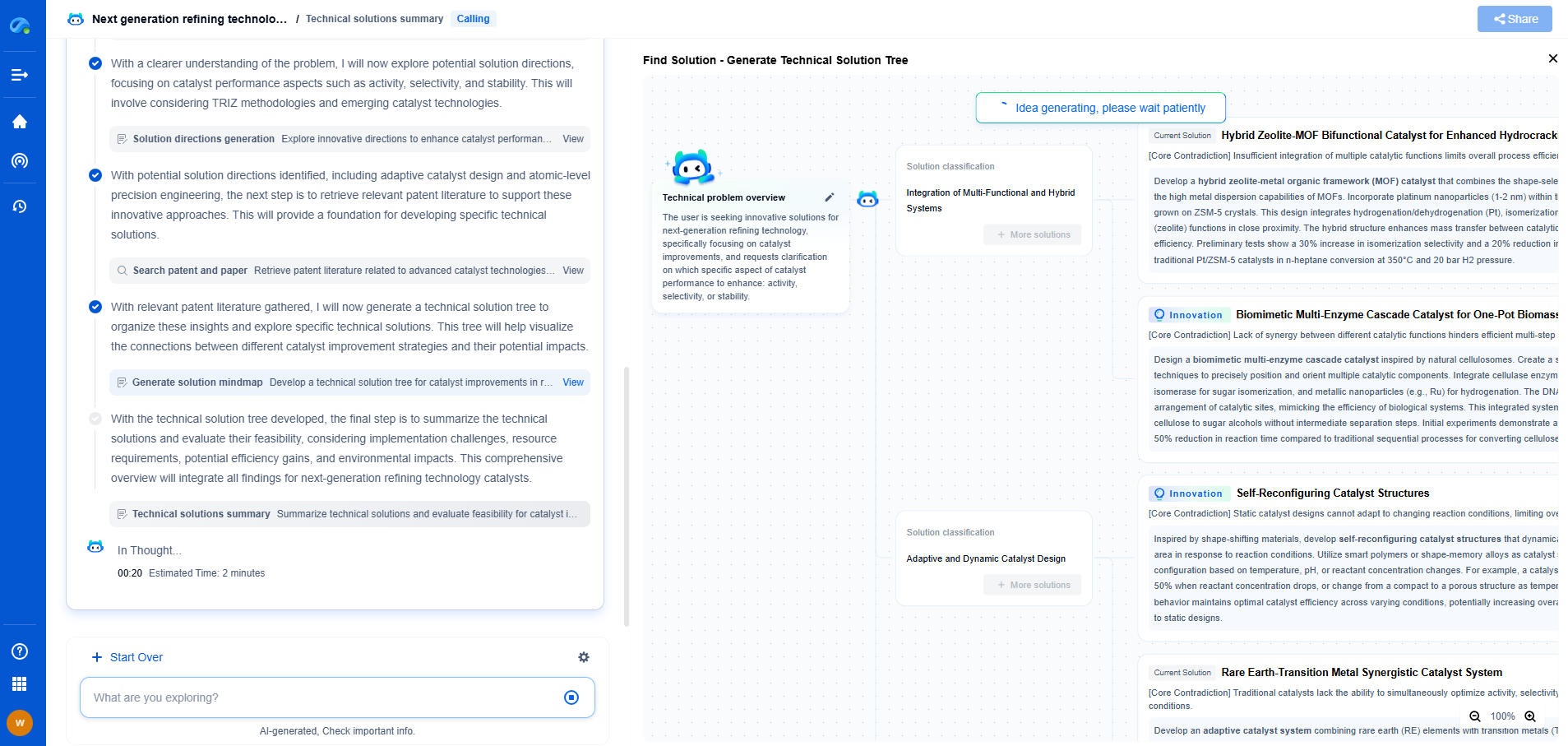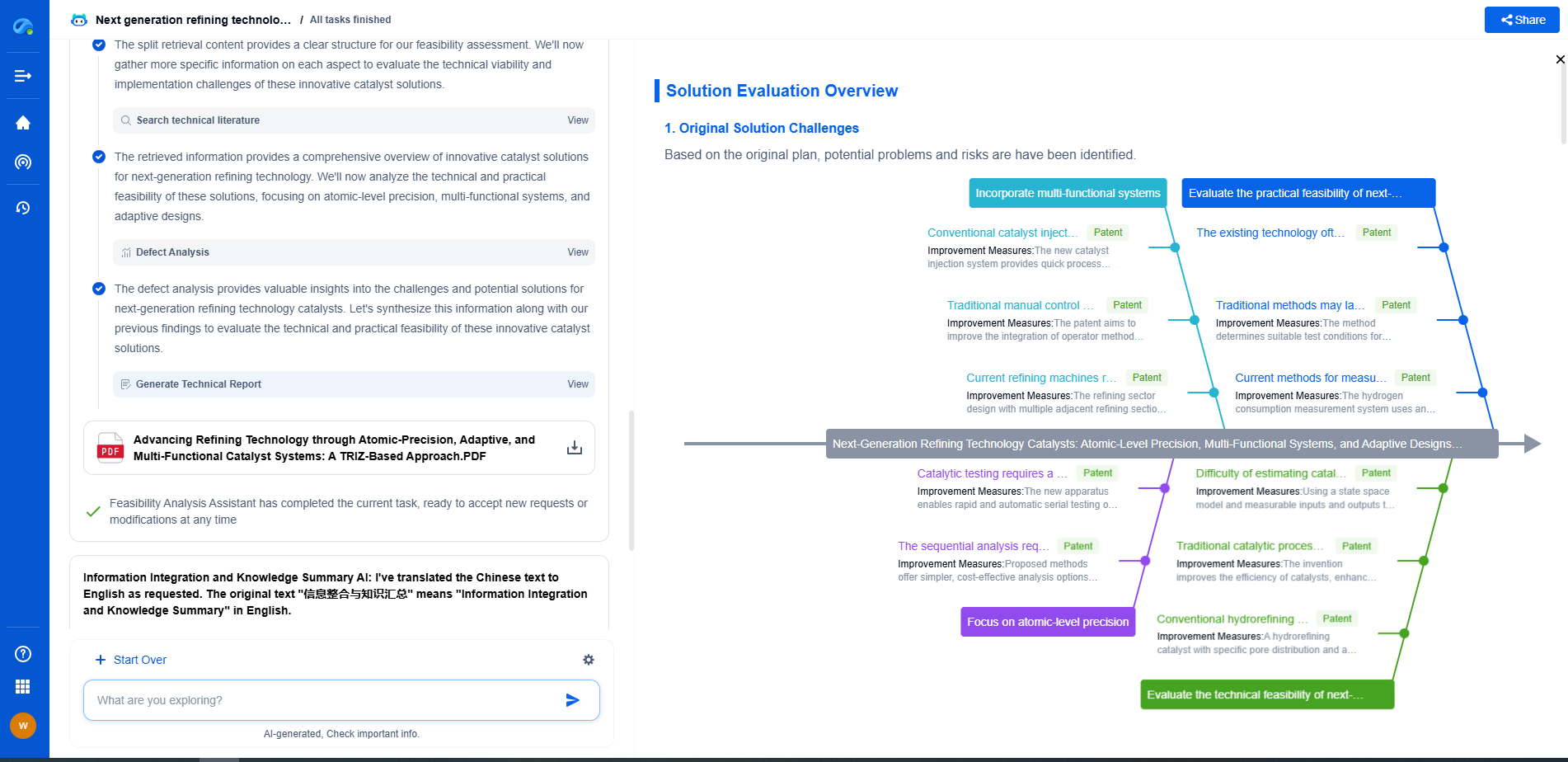Fiber optic vs benchtop spectrometers: Which suits industrial inline measurement?
JUL 15, 2025 |
In the world of industrial manufacturing and processing, the accuracy and efficiency of inline measurements can significantly influence productivity, quality control, and cost management. Among the various tools available for inline measurements, spectrometers are crucial for analyzing the composition of materials or products in real time. Two popular types of spectrometers used in such applications are fiber optic spectrometers and benchtop spectrometers. Each has its unique strengths and limitations, making them suitable for different industrial scenarios. This article delves into the specifics of each type to help determine which best suits industrial inline measurement needs.
Understanding Fiber Optic Spectrometers
Fiber optic spectrometers are known for their flexibility and adaptability in various industrial settings. They utilize fiber optic cables to transmit light from the sample to the spectrometer for analysis. This design allows for a more compact and portable setup, which can be highly beneficial in environments where space is limited or where measurements need to be taken at multiple points.
One of the primary advantages of fiber optic spectrometers is their ability to provide real-time data. This is particularly useful in industries that require constant monitoring of processes, such as chemical manufacturing or food production. The rapid acquisition of data ensures that any deviations or anomalies can be identified and corrected promptly, minimizing waste and enhancing product quality.
However, the performance of fiber optic spectrometers can be influenced by factors such as the length and quality of the fiber optic cables and environmental conditions like temperature and humidity. It is crucial to ensure the system is well-maintained and situated in an environment that minimizes these potential issues.
Exploring Benchtop Spectrometers
Benchtop spectrometers, on the other hand, are more robust and traditionally used in laboratory settings. They are generally larger and less portable compared to their fiber optic counterparts, making them more suitable for environments where space is not a constraint.
The key advantage of benchtop spectrometers lies in their precision and range of analytical capabilities. They often provide higher resolution and more comprehensive data analysis, which can be critical in applications requiring detailed material characterization. This makes them a preferred choice for industries like pharmaceuticals, where precise measurements are essential for compliance and quality control.
While benchtop spectrometers offer superior accuracy, their size and lack of portability can make them less suitable for inline measurement applications that require flexibility and mobility. Additionally, their setup and operation might demand more training and expertise, posing a challenge in industries where staff turnover is high or where there is limited technical support.
Comparative Analysis
When choosing between fiber optic and benchtop spectrometers for industrial inline measurement, several factors need to be considered, such as the specific application requirements, the environment, and budget constraints.
Fiber optic spectrometers are ideal when flexibility, real-time data acquisition, and portability are prioritized. They are particularly suitable for dynamic industrial environments where conditions or measurement points frequently change. On the contrary, benchtop spectrometers are preferred when the utmost precision and comprehensive analysis are necessary, especially in settings where measurements are consistently performed in a controlled environment.
It is also important to consider the cost implications. While fiber optic systems might be less expensive to install initially due to their simplicity and lower hardware requirements, benchtop spectrometers could offer more value in applications where precise and detailed analytical capabilities are crucial, justifying their higher initial cost.
Conclusion
Selecting between fiber optic and benchtop spectrometers for industrial inline measurement depends on the specific needs and constraints of the application. Fiber optic spectrometers offer versatility and efficiency for environments that demand real-time monitoring and flexibility, while benchtop spectrometers provide unparalleled precision and thorough analysis for applications that require detailed material characterization. Evaluating the operational requirements, environmental conditions, and budget will help in making an informed decision that optimizes both performance and cost-effectiveness in industrial processes.
From interferometers and spectroradiometers to laser displacement sensors and fiber optic probes, the field of optical measurement is evolving at light speed—driven by innovations in photonics, MEMS integration, and AI-enhanced signal processing.
With Patsnap Eureka, biomedical innovators can navigate cross-domain insights in optics, electronics, and biocompatible materials, while discovering IP trends across academic, clinical, and commercial datasets.
💡 Fuel your next breakthrough in optical health tech—start using Patsnap Eureka to unlock deep insights today.
- R&D
- Intellectual Property
- Life Sciences
- Materials
- Tech Scout
- Unparalleled Data Quality
- Higher Quality Content
- 60% Fewer Hallucinations
Browse by: Latest US Patents, China's latest patents, Technical Efficacy Thesaurus, Application Domain, Technology Topic, Popular Technical Reports.
© 2025 PatSnap. All rights reserved.Legal|Privacy policy|Modern Slavery Act Transparency Statement|Sitemap|About US| Contact US: help@patsnap.com

